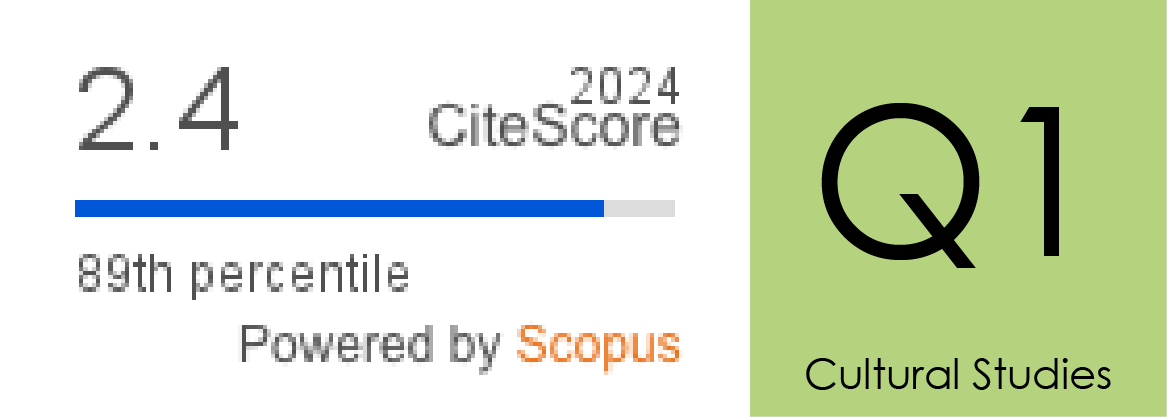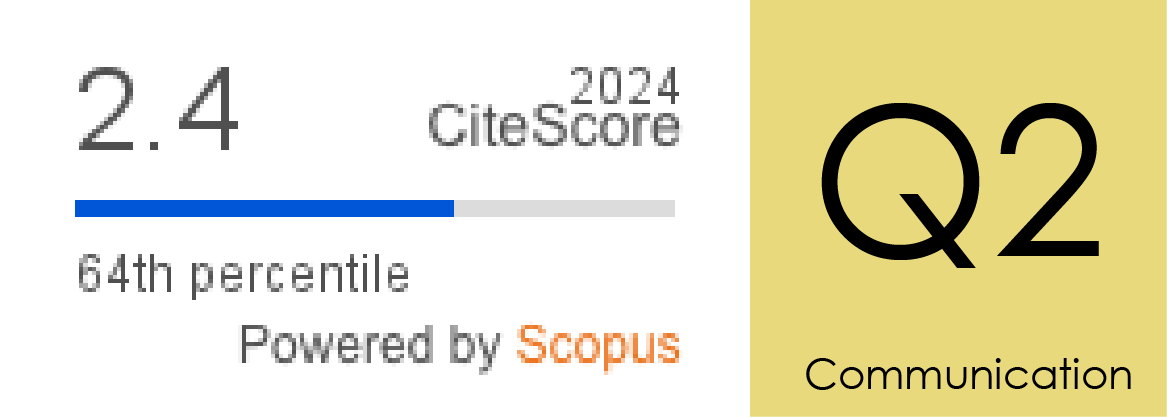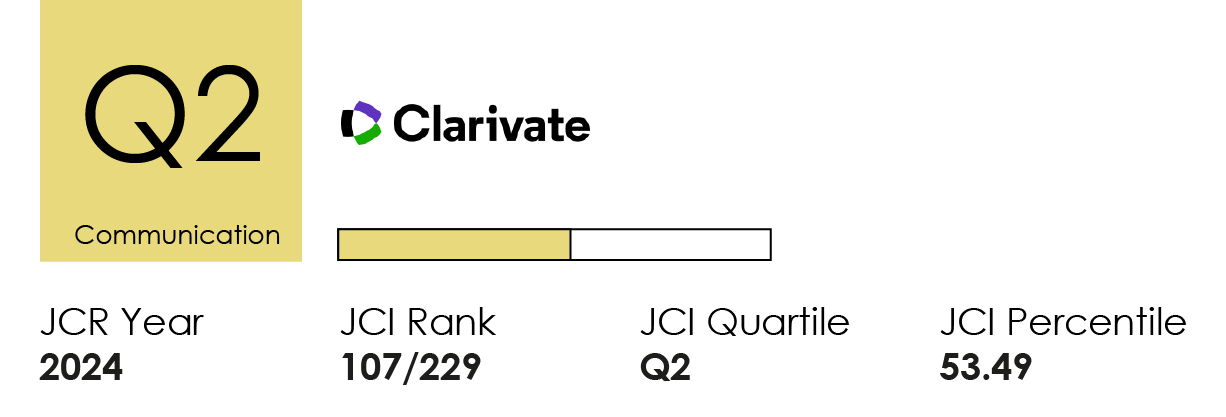Neuromarketing y la medición del efecto de la publicidad de influencers en adolescentes
DOI:
https://doi.org/10.14198/MEDCOM2020.11.2.11Palabras clave:
Efectividad publicitaria, Influencers, Sociograph, Neuromarketing, Branded content, Publicidad encubiertaResumen
La publicidad de influencers es un formato publicitario que se considera muy eficaz en la práctica empresarial y académica. El consumidor lo percibe como un contenido más creíble, menos publicitario y más natural que un formato publicitario tradicional. Para medir su efectividad en adolescentes se ha realizado un experimento exploratorio a través de la herramienta de neuromarketing Sociograph que mide la actividad electrodérmica. Se comparó diferentes tipos de contenidos publicitarios protagonizados por influencers con spots publicitarios tradicionales midiendo el nivel de atención y emoción que provocaban al ser visualizados combinada con una encuesta post visualización. La muestra constaba de 19 niñas de 11 a 16 años. Se realizó en un laboratorio de la Universidad Complutense de Madrid en Junio de 2019. De los diferentes tipos de estímulos analizados, los contenidos protagonizados por influencers son los que más picos de atención generaron. Uno de los branded content de influencers también fue el video que mayor pico de emoción generó y el video que más emocionó a la muestra de todos los visualizados. Este estudio exploratorio parece indicar que la credibilidad de los influencers y el conocimiento previo de la marca también podrían afectar a la percepción positiva del anuncio.
Financiación
Universidad Complutense de Madrid. Facultad de Ciencias de la InformaciónCitas
Aiger, M.; Palacín, M. y Cornejo, J. M. (2013). La señal electrodérmica mediante Sociograph: metodología para medir la actividad grupal. Revista de Psicología Social, 28(3), 333-347. http://doi.org/dkd2
Alalwan, A. A. (2018). Investigating the impact of social media advertising features on customer purchase intention. International Journal of Information Management, 42, 65-77. http://doi.org/drc9
Alalwan, A. A.; Rana, N. P.; Dwivedi, Y. K. & Algharabat, R. (2017). Social media in marketing: A review and analysis of the existing literature. Telematics and Informatics, 34(7), 1177-1190. http://doi.org/gcgn49
Bleier, A. & Eisenbeiss, M. (2015). The importance of trust for personalized online advertising. Journal of Retailing, 91(3), 390-409. http://doi.org/drdb
BrandManic (2018). Estudio sobre Marketing de Influencers en España. https://bit.ly/3aJMFWc
Boerman, S. C.; Van Reijmersdal, E. A. & Neijens, P. C. (2012). Sponsorship disclosure: Effects of duration on persuasion knowledge and brand responses. Journal of Communication, 62(6), 1047-1064. http://doi.org/drdd
Brison, N. T.; Byon, K. K. & Baker III, T. A. (2016). To tweet or not to tweet: the effects of social media endorsements on unfamiliar sport brands and athlete endorsers. Innovation, 18(3), 309-326. http://doi.org/drdf
Campbell, A. J. (2016). Rethinking children’s advertising policies for the digital age. Loyola Consumer Law Review, 29(1). https://bit.ly/2yIAQAW
Casaló, L. V.; Flavián, C. & Ibáñez Sánchez, S. (2018). Influencers on Instagram: Antecedents and consequences of opinion leadership. Journal of Business Research. http://doi.org/drdg
Chang, K. T. T.; Chen, W. & Tan, B. C. Y. (2012). Advertising effectiveness in social networking sites: Social ties, expertise, and product type. IEEE Transactions on Engineering Management, 59(4), 634-643. http://doi.org/drdh
Cho, S.; Huh, J. & Faber, R. J. (2014). The influence of sender trust and advertiser trust on multistage effects of viral advertising. Journal of Advertising, 43(1), 100-114. http://doi.org/drdj
Craig, D. & Cunningham, S. (2017). Toy unboxing: living in a (n unregulated) material world. Media International Australia, 163(1), 77-86. http://doi.org/ggkzd8
Davidson, R. J. (2002). Anxiety and affective style: role of prefrontal cortex and amygdala. Biological Psychiatry, 51(1), 68-80. http://doi.org/cp27b4
Díaz, L. (2017). Soy marca: quiero trabajar con influencers: influencer marketing. Barcelona: Profit.
Djafarova, E. & Rushworth, C. (2017). Exploring the credibility of online celebrities' Instagram profiles in influencing the purchase decisions of young female users. Computers in Human Behavior, 68, 1-7. http://doi.org/gctmtt
Ducoffe, R. H. (1996). Advertising value and advertising on the web. Journal of Advertising Research, 36(5), 21-35.
Droesch, B. (26/08/2019). Your brain on influencers neuroscience study explains the effects of influencer marketing. Emarketer. https://bit.ly/30SZ71j
El Confidencial (14/02/2019). Los 'influencers' ya mueven en España más de 100M de €, pero no es tanto como parece. https://bit.ly/2wJAHwC
Evans, N. J.; Phua, J.; Lim, J. & Jun, H. (2017). Disclosing Instagram influencer advertising: The effects of disclosure language on advertising recognition, attitudes, and behavioral intent. Journal of Interactive Advertising, 17(2), 1–12. http://doi.org/drdk
Göbel, F.; Meyer, A.; Ramaseshan, B. & Bartsch, S. (2017). Consumer responses to covert advertising in social media. Marketing Intelligence & Planning, 35(5), 578-593. http://doi.org/dn68
Goldenberg, J.; Lehmann, D. R.; Shidlovski, D. & Barak, M. M. (2006). The role of expert versus social opinion leaders in new product adoption. Marketing Science Institute Report, 6–124.
Huffaker, D. (2010). Dimensions of leadership and social influence in online communities. Human Communication Research, 36(4), 593-617. http://doi.org/dvbttw
International Advertising Bureau (2015). Guía legal para branded content y figuras publicitarias afines. https://bit.ly/2X0DPPr
International Advertising Bureau (2019a). Libro blanco de marketing de influencers. https://bit.ly/2V0ryb2
International Advertising Bureau (2019b). Libro blanco de branded content y publicidad nativa 2019. https://bit.ly/2X3c9JJ
Kumar, A.; Bezawada, R.; Rishika, R.; Janakiraman, R. & Kannan, P. K. (2016). From social to sale: The effects of firm-generated content in social media on customer behavior. Journal of Marketing, 80(1), 7-25. http://doi.org/gfw3fb
Lee, D.; Hosanagar, K. & Nair, H. (2018). Advertising content and consumer engagement on social media: Evidence from Facebook. Management Science, 64(11), 4967-5460. http://doi.org/gc3km8
Lee, J. & Hong, I. B. (2016). Predicting positive user responses to social media advertising: The roles of emotional appeal, informativeness, and creativity. International Journal of Information Management, 36(3), 360-373. http://doi.org/drdm
Lyons, B. & Henderson, K. (2005). Opinion leadership in a computer‐mediated environment. Journal of Consumer Behaviour: An International Research Review, 4(5), 319-329. http://doi.org/c3sjkp
MacKenzie, S. B. & Lutz, R. J. (1989). An empirical examination of the structural antecedents of attitude toward the ad in an advertising pretesting context. Journal of Marketing, 53(2), 48-65. http://doi.org/gf74gh
Marketing Directo (19/11/2019). La inversion en marketing de influencia en España será de 100 millones de euros en 2019. https://bit.ly/2vmUvVy
Martínez Herrador, J. L.; Monge Benito, S. y Valdunquillo Carlón, M. I. (2012). Medición de las respuestas psicofisiológicas grupales para apoyar el análisis de discursos políticos. Trípodos, 1(29), 53-72. https://bit.ly/34rehfQ
Martínez Nicolás, M.; Saperas, E. y Carrasco, Á. (2019). La investigación sobre comunicación en España en los últimos 25 años. Objetos de estudio y métodos aplicados en los trabajos publicados en revistas españolas especializadas. Empiria. Revista de Metodología en Ciencias Sociales, 42, 37-69. http://doi.org/drdn
Petty, R. E. & Cacioppo, J. T. (1986). The elaboration likelihood of persuasion. Advances in Experimental Social Psychology, 19, 123-205. http://doi.org/bzdp6f
Rogers, E. M. & Cartano, D. G. (1962). Methods of measuring opinion leadership. Public Opinion Quarterly, 26(3), 435–441. http://doi.org/crkt37
Roy, A.; Huh, J.; Pfeuffer, A. & Srivastava, J. (2017). Development of Trust Scores in Social Media (TSM) algorithm and application to advertising practice and research. Journal of Advertising, 46(2), 269-282. http://doi.org/drdp
Russell, C. A. & Belch, M. A. (2005). A managerial investigation into the product placement industry. Journal of Advertising Research, 45(1), 73–92. http://doi.org/cj8hxx
Sánchez, J. (2017). Eficacia Publicitaria. Teorías y modelos aplicados. Madrid: Pirámide.
Sandoval, L. R. (2013). Medios, masas y audiencias. Lecturas sobre teoría social de la comunicación. Comodoro Rivadavia, Argentina: Universitaria de la Patagonia - EDUPA.
Saxena, A. & Khanna, U. (2013). Advertising on social network sites: A structural equation modelling approach. Vision, 17(1), 17–25. http://doi.org/2k2
Solís, A. (05/02/2020). Un tercio de los influencers españoles publica publicidad encubierta y la mayoría piensa que no molesta a sus seguidores. Business Insider. https://bit.ly/2xsB3I7
Tapia Frade, A; Martín Guerra, E. y Puente, J. E. (2016). Neurociencia y publicidad. Atención, emoción y su relación con los premios obtenidos en el Festival Internacional de Publicidad de Cannes. Anàlisi. Quaderns de Comunicació i Cultura, 54, 75-95. http://doi.org/drdq
Taylor, D. G.; Lewin, J. E. & Strutton, D. (2011). Friends, fans, and followers: do ads work on social networks?: how gender and age shape receptivity. Journal of Advertising Research, 51(1), 258-275. http://doi.org/dnsc3q
Torreblanca, F.; Juárez, D.; Sempere, F. y Mengual, A. (2012). Neuromarketing: la emocionalidad y la creatividad orientadas al comportamiento del consumidor. 3C Empresa, Investigación y pensamiento crítico, 6, 20-30. https://bit.ly/2RtYRlR
Tur-Viñes, V.; Núñez Gómez, P. y González Río, M. J. (2018). Menores influyentes en YouTube. Un espacio para la responsabilidad. Revista Latina de Comunicación Social, 73, 1211-1230. http://doi.org/drdr
Tur-Viñes, V.; Núñez Gómez, P. y Martínez Pastor, E. (2019). YouTube, menores y cultura colaborativa. Revisión bibliográfica de la investigación académica. Historia y Comunicación Social, 24(1), 331-351. http://doi.org/drds
Wang, C. C. & Hung, J. C. (2019). Comparative analysis of advertising attention to Facebook social network: Evidence from eye-movement data. Computers in Human Behavior, 100, 192-208. http://doi.org/drdt
Weimann, G. (1994). The influentials: People who influence people. Albany, NY: State University of New York Press.
Wojdynski, B. W.; Evans, N. J. & Hoy, M. G. (2018). Measuring sponsorship transparency in the age of native advertising. Journal of Consumer Affairs, 52(1), 115-137. http://doi.org/drdv
Descargas
Estadísticas
Publicado
Cómo citar
Número
Sección
Licencia
Derechos de autor 2020 Marina Ferrer-López

Esta obra está bajo una licencia internacional Creative Commons Atribución-CompartirIgual 4.0.
Los autores y autoras que publican en esta revista están de acuerdo con los siguientes términos:
1 Derechos de autor. Los autores y autoras conservan sus derechos de autor, aunque ceden a la revista de forma no exclusiva los derechos de explotación (reproducción, distribución, comunicación pública y transformación) y garantizan a esta el derecho de primera publicación de su trabajo, el cual estará simultáneamente sujeto a la licencia indicada en punto 2. Los autores pueden establecer otros acuerdos adicionales para la distribución no exclusiva de la versión de la obra publicada en la revista, siempre que exista un reconocimiento de su publicación inicial en esta revista.
© Los autores.
2 Licencia. Los trabajos se publican en la revista sujetos a la licencia de Reconocimiento 4.0 Internacional de Creative Commons (CC BY 4.0); los términos se pueden consultar en https://creativecommons.org/licenses/by/4.0/
Esta licencia permite a terceros compartir (copiar y redistribuir el material en cualquier medio o formato) y adaptar (remezclar, transformar y crear a partir del material para cualquier finalidad, incluso comercial), siempre que se reconozca la autoría y la primera publicación en esta revista (Revista Mediterránea de Comunicación (RMC) / Mediterranean Journal of Communication (MJC), Universidad de Alicante, DOI de la obra), se proporcione un enlace a la licencia y se indique si se han realizado cambios en la obra.
3 Política de autoarchivo. Se recomienda a los autores que difundan sus trabajos a través de Internet para favorecer una circulación y difusión más rápidas y, con ello, un posible aumento en la citación y alcance entre la comunidad científica y académica, en las siguientes condiciones:
No se permite a los autores depositar en un repositorio institucional o temático, página web propia, etc., las versiones preprint (versión antes de ser evaluada) o postprint (versión evaluada y aceptada para su publicación) de sus trabajos antes de su publicación, pero sí el artículo final publicado (versión del editor).













